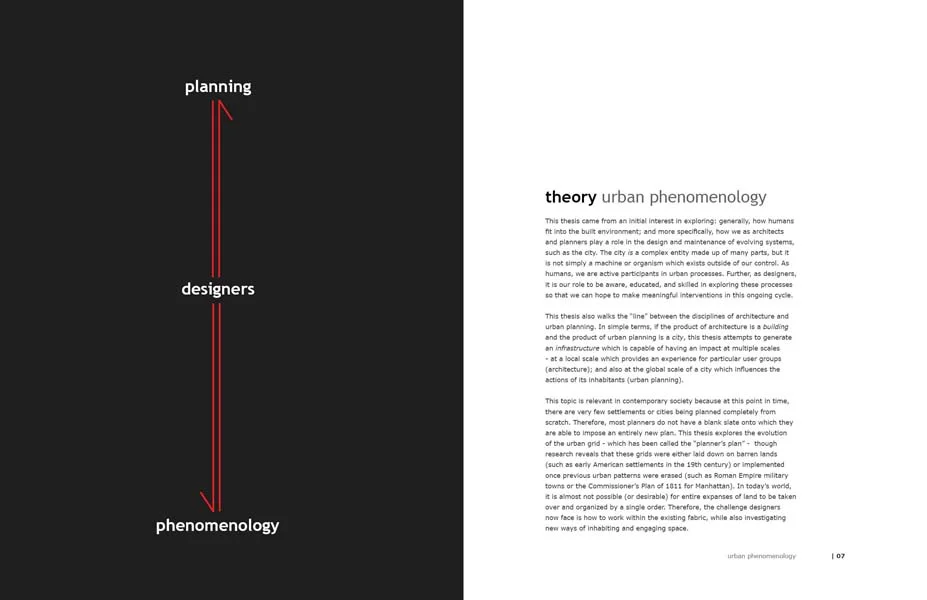b.arch thesis: urban phenomenology
The thesis came from an initial interest in exploring: generally, how humans fit into the built environment; and more specifically, how we as architects and planners play a role in the design and maintenance of evolving systems, such as the city. Urban phenomenology explores the relationship between planning and phenomenology, and also the feedback cycle between the built environment and human actions.
Gridded cities strongly exhibit characteristics of both as reciprocal effects of one another and analyzing this urban pattern has the potential to generate a way of engaging space through movement. The grid provides a global movement pattern throughout the city. However, investigating the more local patterns of walking, pedestrian networks, and accessibility question how the body can activate architecture through movement.








